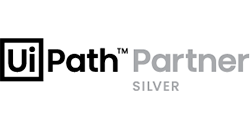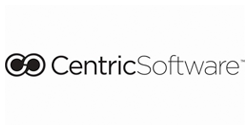ENTERPRISE ARCHITECTURE
Enterprise architecture is an area where all the details regarding operations and structure of an organization are fully examined. In short, you may see the current status of your organization truly, plan your transition to your target architecture [KT1] and get numerous benefits to move your organization forward.
In this essay, we want to briefly share the definition, the benefits and the importance of the enterprise architecture concept.
What is Enterprise Architecture?
When you search the meaning of Enterprise Architecture online, you may end up with finding contradicting, hard to understand and abstract definitions.
Some of these definitions are given below:
• Target-conformant placement
• Comprehensive operational framework
• Visualization of organization's components
There are also many others. So, a much simpler definition of Enterprise Architecture would be:
A enterprise architecture project designs and improves corporate operations to be more compatible with strategies of the organization, and with the needs and demands of the organization's stakeholders.
A enterprise architecture project works on understanding how your business components impact each other. And this requires identifying, documenting these components and revealing the relations among them.
Enterprise architecture plays a supportive role in redesigning and restructuring an organization especially during times of great change (such as acquisitions and mergers). It is also used to improve systems, manage IT processes, make decisions and manage risks.
Four Perspectives
Based on "Architectural Blueprints—The “4+1” View Model of Software Architecture" report of IEEE, it is possible to approach an architectural design from 4 different perspectives. Each of these perspectives fulfill a need. This model identifies the 4 main perspectives as follow:
1. Business Architecture
2. Application Architecture
3. Information&Data Architecture
4. Technology Architecture
The advantages of using this type of a framework are
• simplifying decision making,
• optimizing use of assets,
• decreasing turnover,
• adapting to changes in market and demand,
• eliminating redundant and inefficient processes.
Business Perspective
When you approach from this perspective, you understand how your company runs everyday. This includes assessment of business strategy and executive approach. Moreover, plans for evolving an organization from its current status to its targeted status are made by taking this perspective into consideration.
Typically, it defines
• business functions,
• major organizational structure,
• relations am
ong organizational structures,
• high-level business goals and objectives,
• all common processes carried out by the organization.
Their impacts on one another are also examined. Moreover, the standard practices of the industry should also be observed and redefined according to your organization.
Application Perspective
The portfolio of your business applications is created and followed with this perspective. Thus, it is connected to the outputs of the business perspective, even though it is a superficial connection.
The outputs of this perspective are
• definitions of technology services supporting your business processes,
• interactions and dependencies of systems used in business practices,
• new application development plans,
• refreshing or revising old applications in line with organizational goals and objectives, or new technologies.
This reveals the services all around your organization, their operating methods and the data they work on. The employees are matched with various skills and business functions for compatibility with organizational objectives.
Data Perspective
Data perspective defines and classifies all data required by your organization for efficient operations (files, graphs, spreadsheets).
It includes
• standard data models,
• data management policy,
• definition of information produced and consumed by the organization.
Moreover, data is associated with work flows at this step. This should cover the structural data (databases) and the non-structural data (presentations, documents). Similarly, physical and digital data are also addressed within this scope.
Technology Perspective
This is the IT component of the enterprise architecture. It is the base of the software and hardware layer supporting the business. The examples would be:
• printers,
• routers,
• operating systems,
• desktop and server hardware,
• network connection components.
There are also many others.
In this perspective, you can get a logical definition of the infrastructure and the system components. With this definition, application and data architecture definitions are completed. Technology standards emerge; as a result, compatibility of your business objectives with your services may be identified.
All of these different perspectives are to define a single enterprise architecture.
Consulta in Managing Enterprise Architecture
Today, technologies such as the big data and the mobile, cloud and social media cause significant changes in doing business. This makes a flexible and easy-to-adapt enterprise architecture management essential for organizations to stay competitive.
Designing the ideal enterprise architecture requires not just handling the needs of the organization correctly but also implementing the current technologies and business activities. Therefore at Consulta, we work with Alfabet of Software AG used by the leading companies of the world.
With Alfabet; we
• establish an integrated and common system for the organization and IT, ensure consistency and transparency of organization-wide components,
• determine the surplus applications to improve license management and purchases, and to decrease costs by setting IT standards,
• prepare standardization reports for monitoring your applications' compliance with standards,
• document and analyze the relations between your organizational processes and applications supporting them,
• analyze how the changes in your enterprise architecture will impact your organization and IT.

 English
English
 Turkish
Turkish











